Palmer amaranth (Amaranthus palmeri)
Agriculture and Natural Resources
MT202011AG
Revised April 2025
By Tim Seipel, Jane Mangold, Tim Fine, Monica Pokorny, and Noelle Orloff, Montana State University Extension
Palmer amaranth was detected in Montana in 2023, and has very limited known distribution in the state. Preventing Palmer amaranth from establishing and becoming a troublesome weed in Montana is a high priority. This guide provides information on Palmer amaranth identification, why it’s problematic, and what actions to take if you suspect you have found it.
Palmer amaranth
Palmer amaranth is a problematic broadleaf weed in the pigweed genus. Pigweeds are common in agricultural fields around the world. Pigweeds are warm season annual plants that grow quickly and aggressively, compete with crops, and reproduce through prolific seed production. While Palmer amaranth has not established in Montana, a number of pigweeds are weedy here, including redroot pigweed (A. retroflexus), mat pigweed (A. blitoides), and tumble pigweed (A. albus). Of the three, redroot pigweed is the most common in croplands.
Palmer amaranth has characteristics that make it more problematic than other pigweeds, including rapid growth, prolific seed production with hundreds of thousands of seeds per plant, and resistance to multiple herbicide modes of action. It was ranked as the most problematic weed in the United States in 2016 and has had enormous economic impacts in southern states. Palmer amaranth continues to expand its range, causing major yield losses in a variety of crops.
Identification of Palmer amaranth
Depending on its growth stage, different characteristics are used to identify Palmer amaranth and distinguish it from other pigweeds.
SEEDLINGS AND VEGETATIVE CHARACTERISTICS
Distinguishing among pigweed plants can be difficult before they produce flowers. Palmer amaranth’s stem is reddish and smooth with no hairs. In general, Palmer amaranth has a long central stem with lateral branches and can grow up to eight feet tall. In comparison, redroot and smooth pigweed plants have short, fuzzy hairs on the stems and leaves, and they rarely exceed three feet tall.
Palmer amaranth leaves are alternate and grow symmetrically around the stem like most pigweeds. Cotyledons (first leaves of the seedlings) are strap-shaped with a reddish-purple tint. Leaves of Palmer amaranth tend to be more ovate (egg-shaped) than the rounded leaves of redroot pigweed. Sometimes leaves of Palmer amaranth have a tiny hair-like tip. The petiole (leaf stalk) is often longer than the length of the leaf blade itself, especially compared to other pigweeds in Montana.
FLOWERING
Palmer amaranth is one of a few pigweeds in Montana that is dioecious, meaning there are separate male and female plants. The long flowering stems of female Palmer amaranth plants make them distinct from redroot pigweed. The male and female inflorescence is terminal, meaning it occurs at the end of the stem, and is usually very elongated. Spiny bracts surround the female flowers and flower clusters are spinier to the touch than redroot pigweed. The female inflorescence is generally thicker than the male inflorescence and can be easily identified by rubbing it.
Distribution and vectors of spread
Native to the desert regions of the southwestern U.S. and northern Mexico, Palmer amaranth was transported to the southeastern U.S. where it became a serious weed in soybeans, cotton, and other crops. Palmer amaranth has been moving north and now impacts corn and soybean production in the midwest states. More recently, Palmer amaranth has been found in the upper midwest in conservation plantings where it likely was a contaminant in the seed mix. Palmer amaranth has been reported in nearly every state in the U.S., and spreads through a variety of vectors, including contaminated crop seed, hay, forage, and farming equipment. Vectors of particular concern in Montana include millet seed and irrigated warm season forages.
The Federal Seed Act requires that all agricultural and vegetable seed sold in the U.S. has a label that includes, among other things, percent total weed seed and percent noxious weeds (according to the state noxious weed list where seed originated or is sold). Palmer amaranth is a restricted weed seed in Montana, and the name and percentage of restricted weed seed must be shown on the seed label. Differentiating among pigweed seeds is difficult but can be aided by genetic tests that are relatively inexpensive. Current genetic testing can be done to identify whether the pigweed seed is monoecious (redroot and other common pigweeds) or dioecious (Palmer amaranth). Testing is available through the National Agricultural Genotyping Center (www.genotypingcenter.com/palmer-amaranth-testing). For more information contact MSU Extension (montana.edu/extensionor montana.edu/ extension/ipm).

Seedling of Palmer amaranth. Photo: MSU Extension
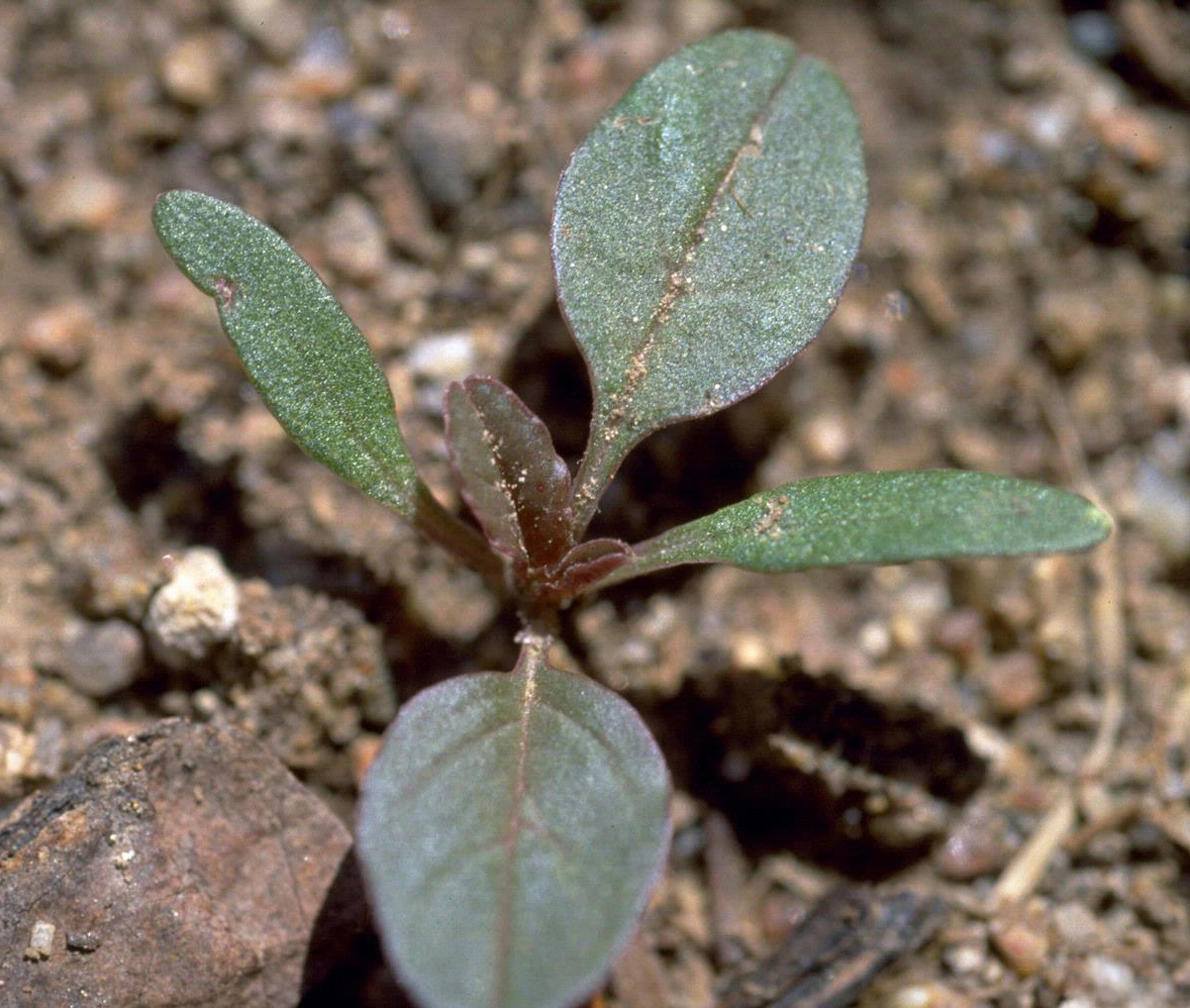
Seedling of redroot pigweed. Photo: Phil Westra, Colorado State University, Bugwood.org
Prevention
Use seed from reliable and trusted sources. Purchase certified seed since it is field inspected for weeds and other contaminants. Ask for a copy of the seed label prior to purchase and check species and amount (number of seeds/pound) of other crop seeds, weed seeds, and noxious weed seeds. If amaranth species are listed under weed seeds, consider purchasing different species or using a different vendor, unless the seed has been tested to determine dioecious pigweed seed was absent. Inspect fields as often as possible, especially mid to late summer, to ensure Palmer amaranth or other noxious weeds are not growing.
As of March 2025, Palmer amaranth has only been found in a few places in Montana. It is not considered established. Monitoring and correct identification is important. If you have questions, please contact your local Extension agent or Montana State University Extension specialists (montana.edu/extension, montana.edu/extension/ipm).
|
Actions if you find a suspicious plant — early detection and rapid response.
|
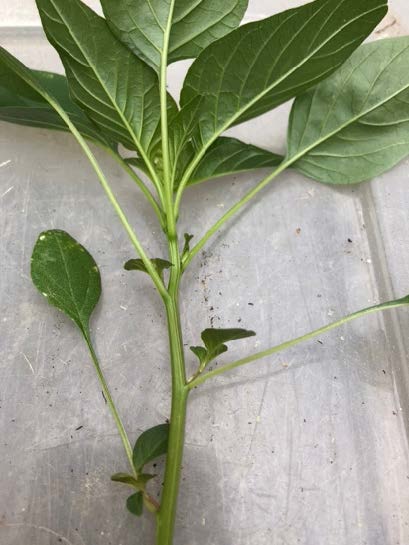
Smooth stem of Palmer amaranth. Photo: MSU Extension
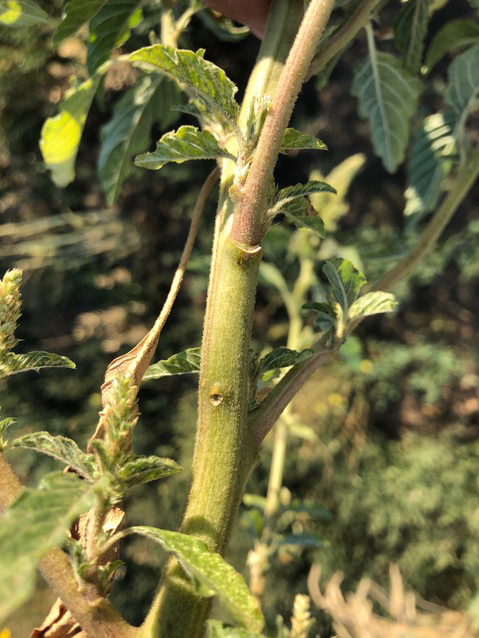
Fuzzy stem of redroot pigweed. Photo: MSU Extension
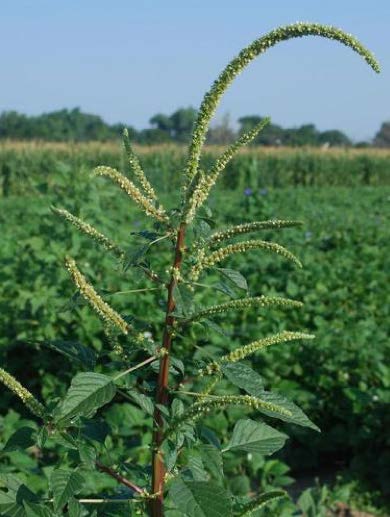
The long flowering stem (inflorescence) of Palmer amaranth. Photo: MSU Extension
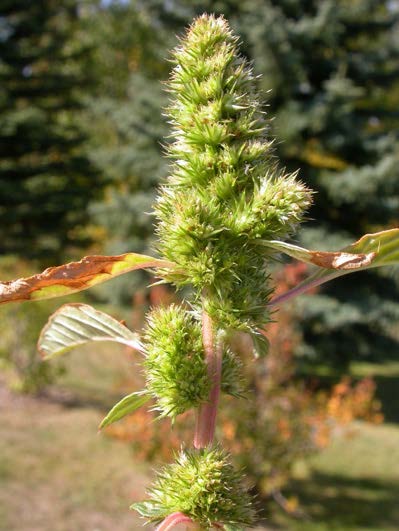
The inflorescence of redroot pigweed is short and thick. Photo: MSU Extension
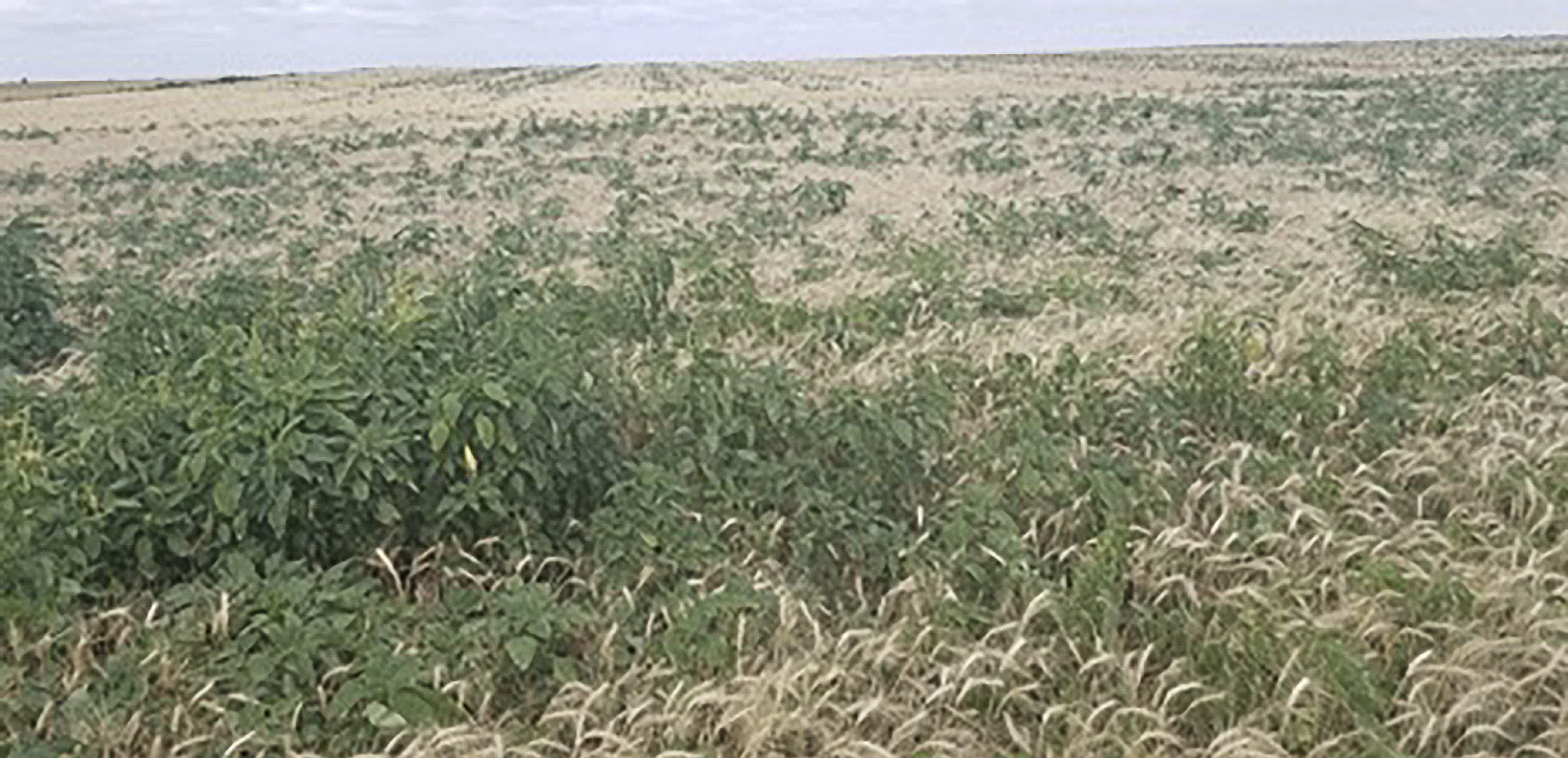
Palmer amaranth in winter wheat field in Oklahoma. Photo: Misha Manuchehri
To download more free online MontGuides or order other publications, visit our online catalog at store.msuextension.org, contact your county or reservation MSU Extension office, or e-mail [email protected].
Copyright © 2025 MSU Extension
We encourage the use of this document for nonprofit educational purposes. This document
may be reprinted for nonprofit educational purposes if no endorsement of a commercial
product, service or company is stated or implied, and if appropriate credit is given
to the author and MSU Extension. To use these documents in electronic formats, permission
must be sought from the Extension Communications Director, 135 Culbertson Hall, Montana
State University, Bozeman, MT 59717; E-mail: [email protected]
The U.S. Department of Agriculture (USDA), Montana State University and Montana State University Extension prohibit discrimination in all of their programs and activities on the basis of race, color, national origin, gender, religion, age, disability, political beliefs, sexual orientation, and marital and family status. Issued in furtherance of cooperative extension work in agriculture and home economics, acts of May 8 and June 30, 1914, in cooperation with the U.S. Department of Agriculture, Cody Stone, Director of Extension, Montana State University, Bozeman, MT 59717.

